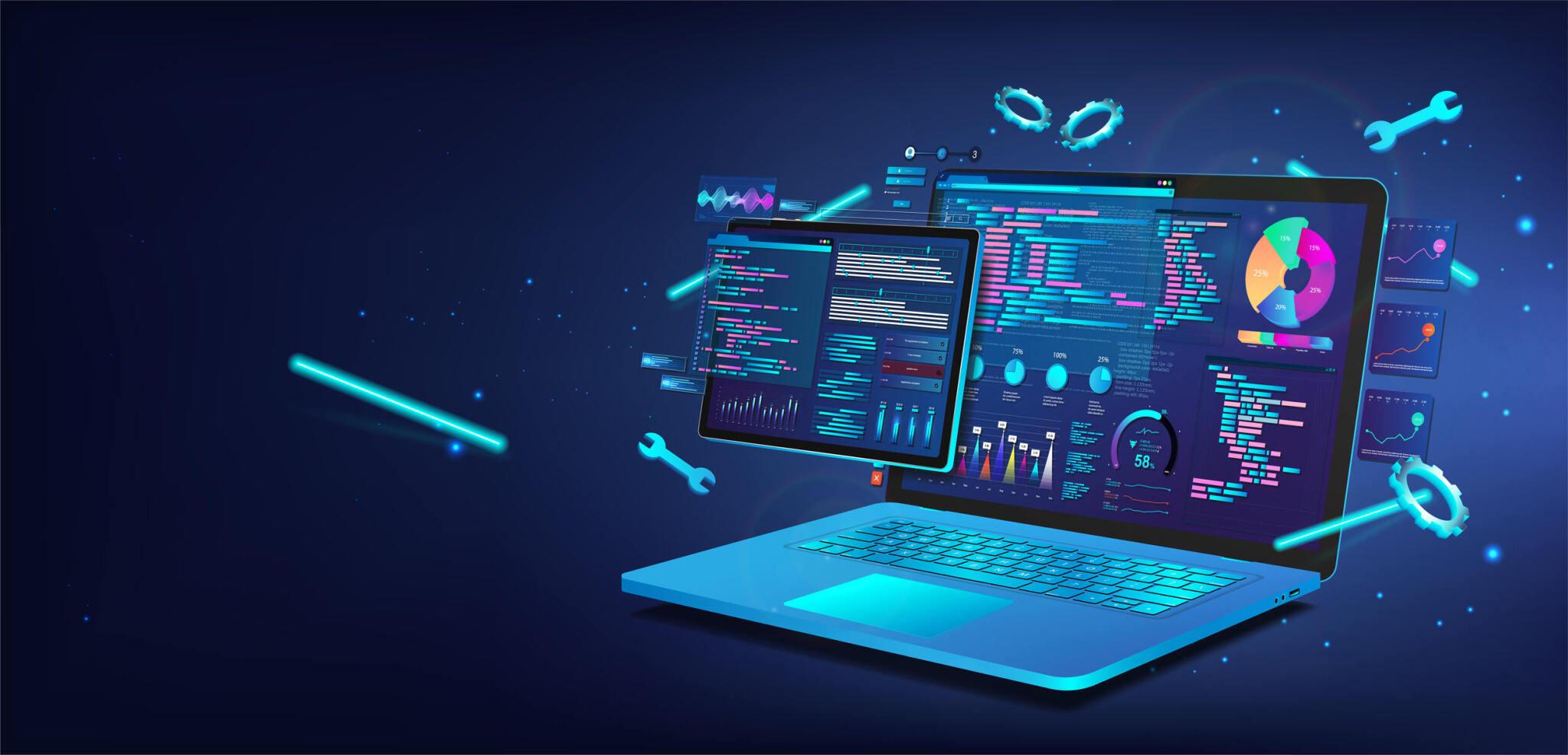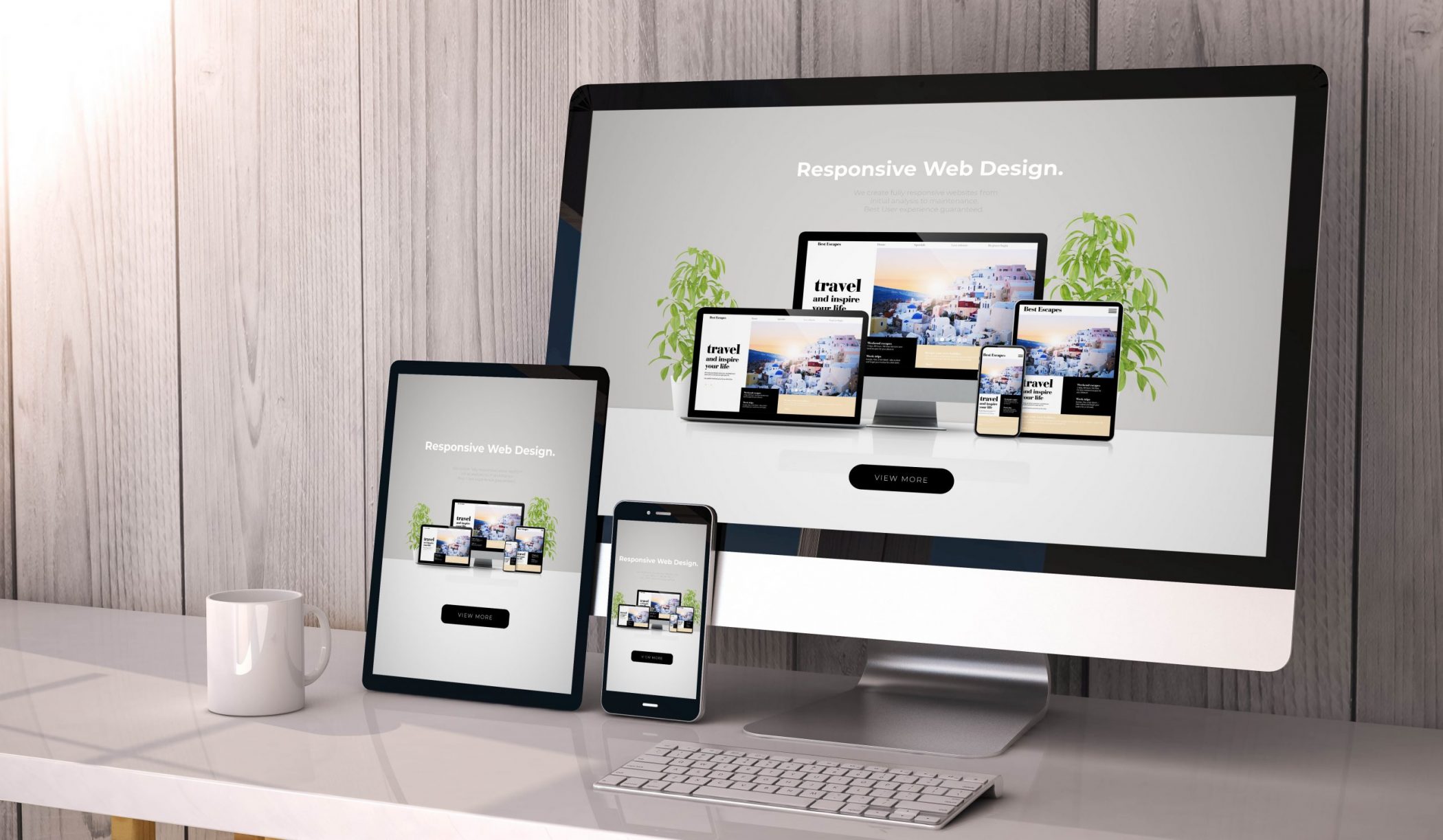Exploring Imaginative Patterns in Web Design for Modern Companies
The landscape of web design is continuously advancing, mirroring the vibrant requirements of contemporary businesses. Current trends highlight a preference for minimalism, bold typography, and interesting interactivity. Firms significantly focus on user experience with mobile-first principles and personalized web content. Additionally, an emphasis on sustainability is acquiring traction. Understanding these trends is important for businesses aiming to stick out in a congested marketplace. What effects do these shifts hold for the future of digital engagement?
Welcoming Strong Typography
Bold typography has actually become a specifying component in contemporary web design, catching attention and conveying messages with striking quality. This pattern focuses on visually impactful message that boosts user involvement and brand name identification. Designers frequently use large fonts and special typefaces to create a power structure, assisting audiences with web content perfectly.
The strategic use bold typography permits for reliable storytelling, making it possible for brand names to interact their values succinctly. It serves not just visual purposes yet also practical ones, as it improves readability across gadgets and display dimensions.
As web sites compete for user attention, strong typography stands apart in a saturated electronic landscape. Its adaptability allows designers to try out contrasting formats and shades, further magnifying its effectiveness. Inevitably, welcoming bold typography represents a shift towards more meaningful and communicative web design, cultivating a much deeper connection between brand names and their target markets.
The Rise of Minimalist Style
As electronic atmospheres become increasingly cluttered, the increase of minimalist style supplies a rejuvenating alternative that prioritizes simpleness and functionality. This style philosophy remove unneeded components, permitting web content to take spotlight. By concentrating on tidy lines, ample white room, and a restricted shade palette, minimalist style improves user experience and improves navigating.
Organizations adopting this fad purpose to share their brand message clearly and efficiently, fostering a feeling of calmness and quality. The absence of distractions assists customers focus on important details, bring about enhanced interaction and conversion prices. Additionally, minimal style straightens well with mobile-first strategies, ensuring that internet sites stay user-friendly and obtainable throughout various devices.
Eventually, the surge of minimalist design shows a broader change towards focusing on user needs and choices, making it a powerful device for contemporary businesses aiming to make a long-term impact in the electronic landscape.
Immersive Animations and Interactivity
While several web developers embrace minimal aesthetic appeals, an additional compelling fad acquiring grip is the use of immersive computer animations and interactivity. This technique boosts user interaction by developing intriguing experiences that attract visitors into the web content. Designers utilize vibrant aspects such as computer animated backgrounds, scrolling impacts, and interactive infographics to connect complex ideas in an available way.
These computer animations not just give aesthetic passion yet additionally guide users through the navigation procedure, making communications more intuitive. Hover results and computer animated changes can motivate users to explore further, leading to increased time invested on the website.
This trend aligns with the more comprehensive motion towards narration in internet layout, where animations serve as narrative tools that communicate brand name messages efficiently. By integrating immersive computer animations and interactivity, services can distinguish themselves in a crowded online landscape, ultimately enhancing user complete satisfaction and brand commitment.
Mobile-First Design Concepts
Mobile-first style principles stress prioritizing user experience by making sure web sites work perfectly on smaller screens. This technique includes receptive format methods that adjust to various gadget sizes while keeping visual honesty. Furthermore, it concentrates on touchscreen navigation layout, improving usability for mobile users.
Focusing On User Experience
Just how can developers properly prioritize user experience in a significantly mobile-centric world? Highlighting mobile-first design concepts is vital, as customers mostly involve with sites via smart phones. This approach motivates developers to improve web content, ensuring it is accessible and conveniently obtainable on smaller sized displays. Key practices consist of simplifying navigating, decreasing load times, and employing touch-friendly aspects that enhance interactivity. Furthermore, prioritizing readable typography and user-friendly designs can significantly enhance user complete satisfaction. Developers ought to continuously gather user feedback to fine-tune their techniques, adapting to progressing user needs and preferences. By concentrating on these elements, businesses can produce an appealing electronic experience that cultivates loyalty and drives conversions, eventually lining up with the assumptions of today's mobile individuals.
Receptive Design Methods
Designers welcome receptive format methods see this page to create adaptable and adaptive internet experiences that accommodate different screen sizes. This approach focuses on mobile-first style concepts, guaranteeing peak capability on smaller tools before scaling up for larger screens. By using fluid grids, adaptable pictures, and media queries, designers can keep a natural visual identification throughout all systems. This method not just improves user interaction but also improves internet search engine positions, as mobile-friendly sites are favored by search algorithms. Additionally, receptive layouts permit businesses to reach a broader target market, accommodating users on tablets, desktop computers, and mobile phones alike. In general, implementing these methods is vital for modern web design, ensuring that services continue to be affordable in an ever-evolving electronic landscape.
Touchscreen Navigating Design
With the increase of mobile tools, touchscreen navigation has come to be an essential aspect of web design. Designers are increasingly embracing mobile-first concepts to boost user experience and engagement. agency for web design. Efficient touchscreen navigating prioritizes bigger switches and user-friendly gestures, enabling customers to interact conveniently with web content. This approach decreases aggravation and urges expedition, as customers can browse flawlessly with their fingers. In addition, including swipe motions and faucet capability caters to the all-natural habits of mobile users. Feedback mechanisms, such as visual signs and computer animations, enhance functionality better by confirming actions. As touchscreens control user interactions, employing these style elements not only lines up with modern expectations but also promotes an extra accessible and delightful browsing experience for all customers
Individualized User Experiences
What makes a user really feel truly engaged on an internet site? The solution usually depends on personalized user experiences. By tailoring content and navigating to private choices, businesses can produce a meaningful connection with their audience. This personalization can be attained via various techniques, such as evaluating user behavior, making use of cookies, and using tailored suggestions based upon previous communications.
For example, e-commerce platforms that recommend items based on surfing history not just enhance user experience however additionally boost conversion prices. In addition, integrating dynamic material that adapts to the user's location or time of day can further enhance engagement.
Furthermore, customized introductions or messages can make customers feel valued and recognized. As contemporary organizations seek to stand apart in a competitive electronic landscape, accepting personalized user experiences ends up being necessary, fostering commitment and motivating repeat visits. Inevitably, this approach transforms a basic web site right into an interactive platform that reverberates with its audience.
Sustainability in Web Design
As the digital landscape remains to progress, the significance of sustainability in web design has gained substantial focus. Designers are progressively mindful of the ecological influence their productions can have, prompting a shift towards environment-friendly methods (agency for web design). Sustainable web design concentrates on optimizing websites to lower energy consumption and carbon footprints. Approaches include using minimalistic layout principles, optimizing pictures, and utilizing efficient coding methods to improve loading speeds
The selection of holding providers plays a crucial role; numerous developers are now deciding for environment-friendly hosting services powered by renewable power. By focusing on ease of access and easy to use navigation, sustainable designs likewise satisfy a broader audience, improving functionality. This mindful approach not just charms to environmentally-minded consumers however likewise adds to the total longevity and performance of internet sites. Ultimately, sustainability in web design shows a growing trend in the direction of liable electronic methods that line up with modern-day organization worths.

Often Asked Inquiries
How Can I Select the Right Color Pattern for My Website?
To pick the right color system for visit the website an internet site, one ought to consider the brand's identification, target market, and emotional influence. Making use of shade concept and testing mixes can boost user experience and visual charm considerably.
What Are the very best Tools for Prototyping Website Design?
The most effective tools for prototyping website design include Figma, Lay out, Adobe XD, and InVision. These systems supply instinctive user interfaces, cooperation attributes, and extensive collections, making them suitable for from this source developers to develop and improve their ideas properly.
Just how Do I Determine the Performance of My Web Design?
To gauge web design efficiency, one must analyze user interaction metrics, conversion rates, and use comments (Website Design Agency). A/B testing and heatmaps can additionally give understandings into user actions, directing needed adjustments for better efficiency and user experience
What Prevail Web Design Mistakes to Stay Clear Of?
Typical web design errors include messy designs, bad navigation, slow packing times, absence of mobile optimization, inadequate contrast, and neglecting user responses. Preventing these mistakes enhances user experience and enhances overall efficiency of the website.
Exactly how Often Should I Update My Website Style?
A web site layout must be upgraded every two to 3 years, or earlier if significant changes in branding or modern technology occur. Routine updates maintain the site fresh, functional, and aligned with current user expectations.
